-
 bitcoin
bitcoin $110323.126235 USD
1.94% -
 ethereum
ethereum $3864.833023 USD
1.25% -
 tether
tether $1.000393 USD
0.02% -
 bnb
bnb $1133.877748 USD
4.86% -
 xrp
xrp $2.393640 USD
1.11% -
 solana
solana $192.566078 USD
6.48% -
 usd-coin
usd-coin $0.999906 USD
0.00% -
 tron
tron $0.313196 USD
-2.80% -
 dogecoin
dogecoin $0.194944 USD
2.29% -
 cardano
cardano $0.643216 USD
2.65% -
 hyperliquid
hyperliquid $39.990234 USD
7.27% -
 chainlink
chainlink $17.375446 USD
0.89% -
 ethena-usde
ethena-usde $0.999536 USD
0.02% -
 stellar
stellar $0.310716 USD
0.33% -
 bitcoin-cash
bitcoin-cash $480.762464 USD
1.14%
A simple explanation of the Bitcoin mining process
Bitcoin mining secures the network by verifying transactions and adding them to the blockchain, with miners competing to solve complex puzzles for rewards.
Oct 21, 2025 at 05:54 am
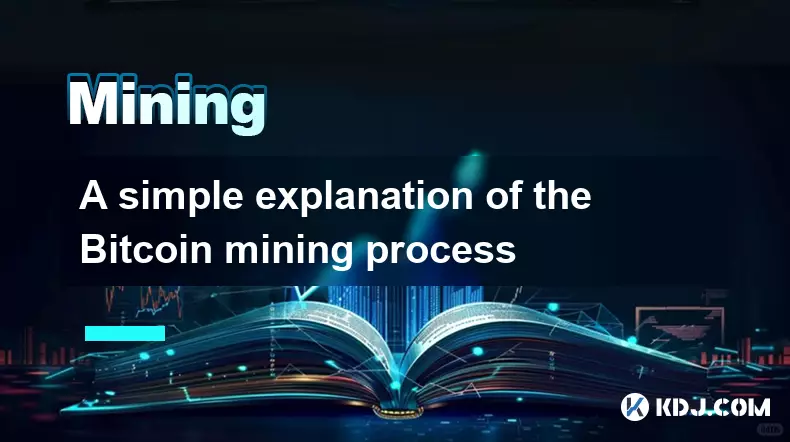
What Is Bitcoin Mining?
1. Bitcoin mining is the process by which new bitcoins are introduced into circulation and transactions are verified on the blockchain network. Miners use powerful computers to solve complex cryptographic puzzles, a task that secures the network and ensures trustless transaction validation.
2. The mining process involves bundling recent Bitcoin transactions into blocks. Each block contains a reference to the previous block, forming a continuous chain. To add a new block, miners must find a specific number called a nonce that, when combined with the block data and hashed, produces a result below a target threshold set by the network.
3. This computational challenge is known as proof-of-work. It prevents malicious actors from easily altering the blockchain because changing any single block would require redoing the proof-of-work for all subsequent blocks, which is computationally infeasible.
4. Miners compete globally to be the first to solve the puzzle and earn the right to add the next block to the blockchain. The winner receives a block reward—newly minted bitcoins—and transaction fees paid by users whose transactions are included in the block.
5. The difficulty of the mining puzzle adjusts approximately every two weeks based on the total computing power of the network, ensuring that blocks are added roughly every ten minutes regardless of how many miners are active.
How Do Miners Validate Transactions?
1. When a user sends Bitcoin, the transaction is broadcast across the peer-to-peer network and collected by nodes, including miners. These transactions remain unconfirmed until they are included in a block.
2. Miners prioritize transactions based on the fees attached. Higher-fee transactions are more likely to be included quickly, while low-fee transactions may wait longer or be dropped during periods of high congestion.
3. Before attempting to mine a block, miners verify each transaction’s legitimacy by checking digital signatures and ensuring that the sender has sufficient balance and hasn’t attempted to spend the same coins twice—a problem known as double-spending.
4. Once a miner successfully solves the cryptographic puzzle, the new block is propagated across the network. Other nodes independently validate the block and its transactions before accepting it as part of the blockchain.
5. This decentralized verification mechanism ensures that no single entity controls the ledger, preserving the integrity and censorship resistance of the Bitcoin network.
The Role of Mining Hardware and Pools
1. In Bitcoin’s early days, mining could be done efficiently with standard CPUs and later GPUs. As competition increased, specialized hardware known as ASICs (Application-Specific Integrated Circuits) became dominant due to their superior efficiency and processing power.
2. Individual miners often struggle to compete with large-scale operations equipped with thousands of ASICs running in low-cost energy environments. Because rewards are only given to the miner who finds the correct hash, solo mining has become statistically unlikely to yield returns.
3. To increase their chances of earning consistent rewards, most miners join mining pools. These are groups of miners who combine their computational resources and share the block rewards proportionally based on contributed work.
4. Mining pools operate through coordination servers that assign portions of the hashing workload to participants and track their contributions. While pools democratize access to rewards, they have also raised concerns about centralization, as a few large pools control significant portions of the network’s hash rate.
5. The evolution of mining technology and infrastructure highlights the increasing industrialization of Bitcoin mining, transforming it from a hobbyist activity into a capital-intensive industry.
Frequently Asked Questions
What happens when all 21 million bitcoins are mined?Once the maximum supply of 21 million bitcoins is reached, expected around the year 2140, miners will no longer receive newly minted bitcoins as block rewards. Instead, their income will rely entirely on transaction fees paid by users. The incentive structure is designed so that even without block subsidies, the network remains secure as long as transaction volume and fee levels support continued mining activity.
Is Bitcoin mining legal everywhere?The legality of Bitcoin mining varies by country. It is fully permitted and regulated in nations like the United States, Canada, and Germany. However, some countries, including China and Egypt, have imposed restrictions or outright bans due to concerns over energy consumption, financial sovereignty, or capital controls. Miners must comply with local regulations regarding electricity usage, business licensing, and tax reporting.
How much energy does Bitcoin mining consume?Bitcoin mining consumes a substantial amount of electricity, comparable to the annual energy usage of medium-sized countries. Critics highlight this as environmentally concerning, especially when fossil fuels power mining operations. However, proponents argue that an increasing share of mining uses renewable energy sources, particularly in regions with surplus hydroelectric, wind, or solar power, and that the energy expenditure is justified by the security and decentralization it provides.
Can anyone start Bitcoin mining at home today?While technically possible, home mining is rarely profitable due to the high cost of ASIC hardware, electricity expenses, cooling requirements, and intense competition. Most residential setups cannot match the efficiency of industrial mining farms located in areas with cheap electricity and optimized infrastructure. For casual participants, purchasing Bitcoin directly is often a more practical alternative to mining.
Disclaimer:info@kdj.com
The information provided is not trading advice. kdj.com does not assume any responsibility for any investments made based on the information provided in this article. Cryptocurrencies are highly volatile and it is highly recommended that you invest with caution after thorough research!
If you believe that the content used on this website infringes your copyright, please contact us immediately (info@kdj.com) and we will delete it promptly.
- Essex Post Office, 5p Coins, and King Charles: A Royal Mint Revelation!
- 2025-10-23 10:30:16
- Waymo's Newark Airport AV Tests: Alphabet's AI Gamble Pays Off?
- 2025-10-23 10:30:16
- King Charles 5p Coins: A Royal Flush in Your Pocket?
- 2025-10-23 10:35:18
- Solana, Crypto Advisory, and Forward Industries: A New York Minute on the Future of Finance
- 2025-10-23 08:51:22
- MAGACOIN: Ethereum Whales Dive into the Hottest Presale of 2025
- 2025-10-23 08:51:22
- Kadena's End of the Road? KDA Token Plummets Amid Project Abandonment
- 2025-10-23 08:55:34
Related knowledge

A simple explanation of the Bitcoin mining process
Oct 21,2025 at 05:54am
What Is Bitcoin Mining?1. Bitcoin mining is the process by which new bitcoins are introduced into circulation and transactions are verified on the blo...
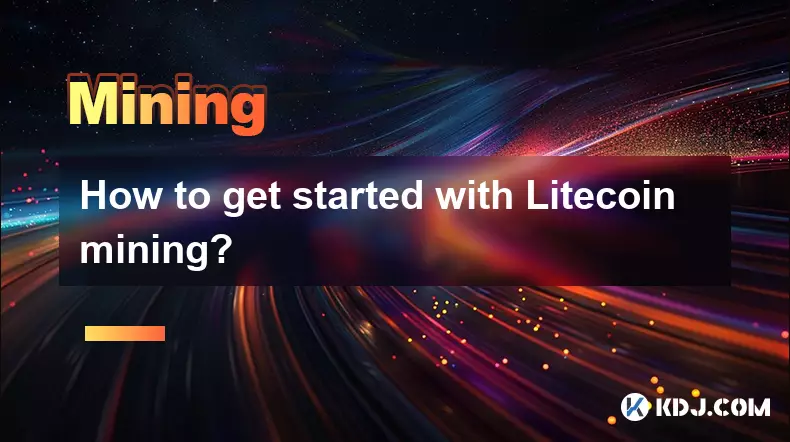
How to get started with Litecoin mining?
Oct 19,2025 at 07:01am
Understanding Litecoin Mining Basics1. Litecoin mining involves verifying transactions on the Litecoin blockchain using computational power. Miners so...
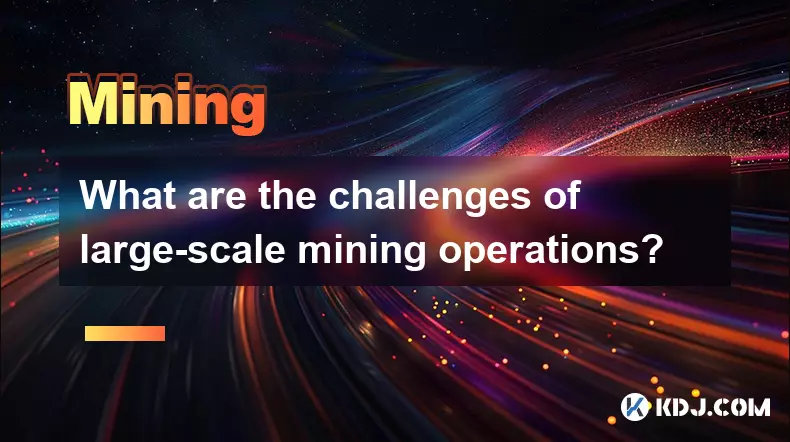
What are the challenges of large-scale mining operations?
Oct 18,2025 at 07:01pm
Energy Consumption and Power Management1. Large-scale mining operations require massive amounts of electricity to power thousands of ASICs or GPUs run...
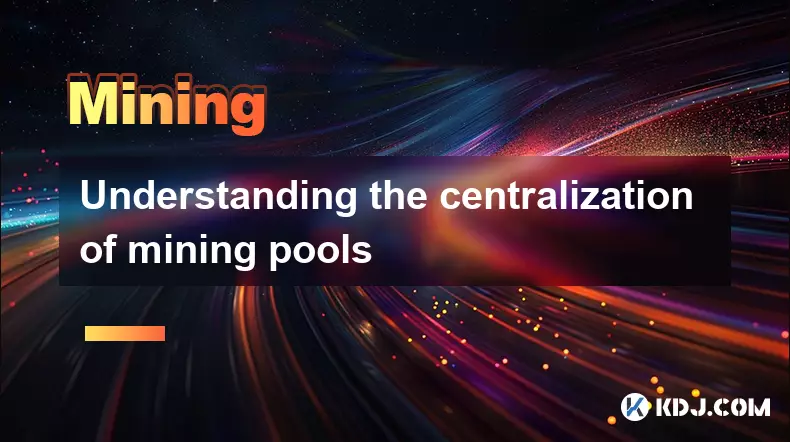
Understanding the centralization of mining pools
Oct 24,2025 at 05:19am
Power Distribution in Cryptocurrency Mining Networks1. The structure of mining pools plays a crucial role in determining how decentralized a blockchai...
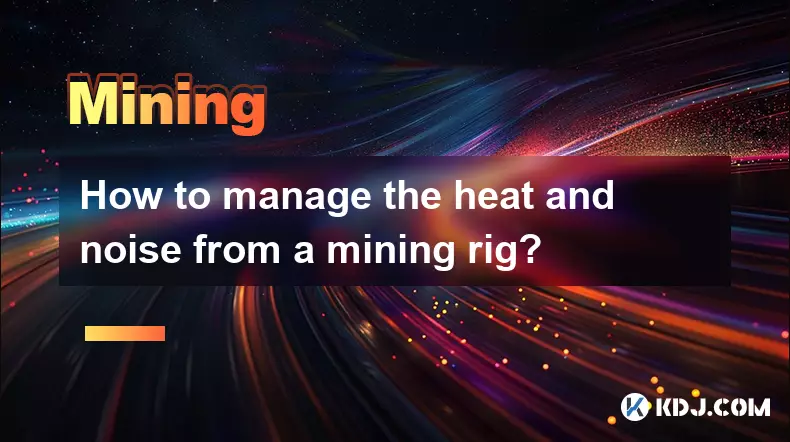
How to manage the heat and noise from a mining rig?
Oct 22,2025 at 05:36pm
Optimizing Ventilation for Mining Rigs1. Proper airflow is essential when running a mining rig continuously. Position the rig in a well-ventilated roo...
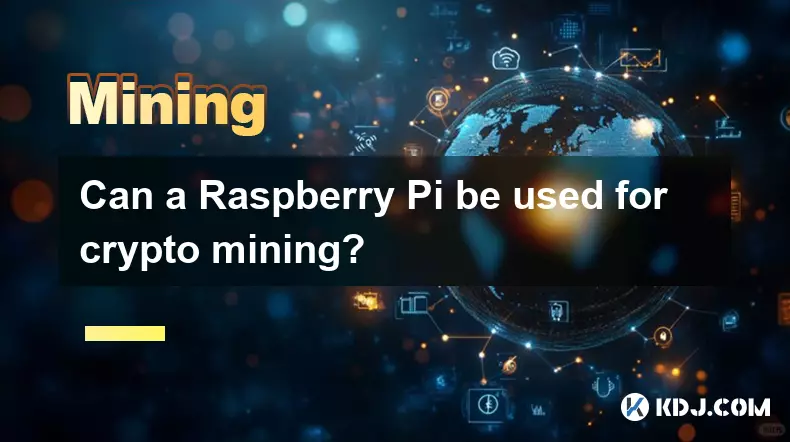
Can a Raspberry Pi be used for crypto mining?
Oct 21,2025 at 04:18pm
Feasibility of Using Raspberry Pi for Cryptocurrency Mining1. The Raspberry Pi is a compact, low-power single-board computer designed primarily for ed...

A simple explanation of the Bitcoin mining process
Oct 21,2025 at 05:54am
What Is Bitcoin Mining?1. Bitcoin mining is the process by which new bitcoins are introduced into circulation and transactions are verified on the blo...

How to get started with Litecoin mining?
Oct 19,2025 at 07:01am
Understanding Litecoin Mining Basics1. Litecoin mining involves verifying transactions on the Litecoin blockchain using computational power. Miners so...

What are the challenges of large-scale mining operations?
Oct 18,2025 at 07:01pm
Energy Consumption and Power Management1. Large-scale mining operations require massive amounts of electricity to power thousands of ASICs or GPUs run...

Understanding the centralization of mining pools
Oct 24,2025 at 05:19am
Power Distribution in Cryptocurrency Mining Networks1. The structure of mining pools plays a crucial role in determining how decentralized a blockchai...

How to manage the heat and noise from a mining rig?
Oct 22,2025 at 05:36pm
Optimizing Ventilation for Mining Rigs1. Proper airflow is essential when running a mining rig continuously. Position the rig in a well-ventilated roo...

Can a Raspberry Pi be used for crypto mining?
Oct 21,2025 at 04:18pm
Feasibility of Using Raspberry Pi for Cryptocurrency Mining1. The Raspberry Pi is a compact, low-power single-board computer designed primarily for ed...
See all articles










































































